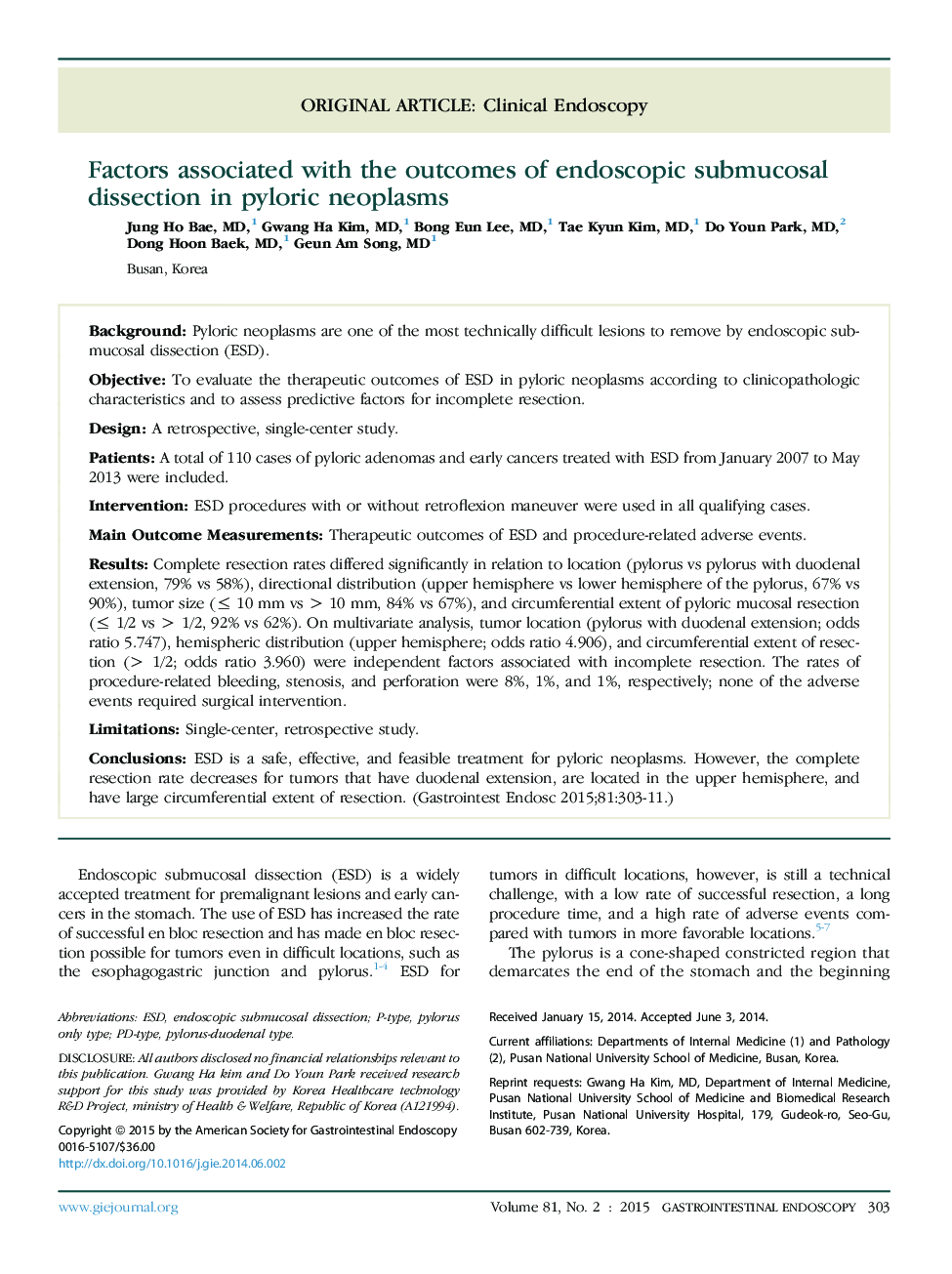| Article ID | Journal | Published Year | Pages | File Type |
|---|---|---|---|---|
| 3302510 | Gastrointestinal Endoscopy | 2015 | 9 Pages |
BackgroundPyloric neoplasms are one of the most technically difficult lesions to remove by endoscopic submucosal dissection (ESD).ObjectiveTo evaluate the therapeutic outcomes of ESD in pyloric neoplasms according to clinicopathologic characteristics and to assess predictive factors for incomplete resection.DesignA retrospective, single-center study.PatientsA total of 110 cases of pyloric adenomas and early cancers treated with ESD from January 2007 to May 2013 were included.InterventionESD procedures with or without retroflexion maneuver were used in all qualifying cases.Main Outcome MeasurementsTherapeutic outcomes of ESD and procedure-related adverse events.ResultsComplete resection rates differed significantly in relation to location (pylorus vs pylorus with duodenal extension, 79% vs 58%), directional distribution (upper hemisphere vs lower hemisphere of the pylorus, 67% vs 90%), tumor size (≤ 10 mm vs > 10 mm, 84% vs 67%), and circumferential extent of pyloric mucosal resection (≤ 1/2 vs > 1/2, 92% vs 62%). On multivariate analysis, tumor location (pylorus with duodenal extension; odds ratio 5.747), hemispheric distribution (upper hemisphere; odds ratio 4.906), and circumferential extent of resection (> 1/2; odds ratio 3.960) were independent factors associated with incomplete resection. The rates of procedure-related bleeding, stenosis, and perforation were 8%, 1%, and 1%, respectively; none of the adverse events required surgical intervention.LimitationsSingle-center, retrospective study.ConclusionsESD is a safe, effective, and feasible treatment for pyloric neoplasms. However, the complete resection rate decreases for tumors that have duodenal extension, are located in the upper hemisphere, and have large circumferential extent of resection.
